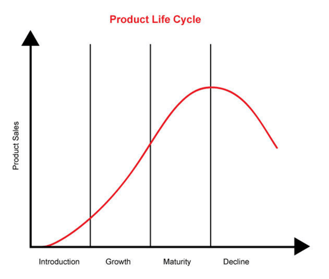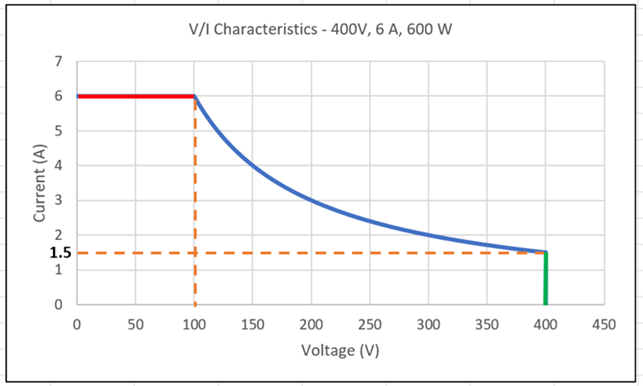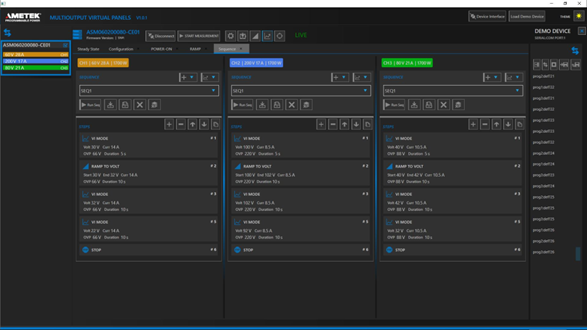When choosing programmable DC power supplies, you have many options. You can choose from a wide range of voltage, current, and power ratings. You will also select other specifications, including input voltage, output voltage regulation, output ripple and noise, and transient response time to a step input. Then, you will want to consider digital communications options, software compatibility, and whether you will need manual front-panel controls. And of course, you will also have multiple vendors from which to choose.
But once you’ve resolved these rather apparent choices, one factor can be of critical importance for success: at what point in the product-line lifecycle is the programmable power supply you plan to buy?
 There are many advantages to choosing from a relatively new product line. You will generally get higher performance in a smaller package because the vendor will have integrated state-of-the-art semiconductors and other components unavailable when the vendor launched its previous-generation products. You will also get the latest versions of communications interfaces at a lower cost and the latest touchscreen display technology if you require local manual control and data readout.
There are many advantages to choosing from a relatively new product line. You will generally get higher performance in a smaller package because the vendor will have integrated state-of-the-art semiconductors and other components unavailable when the vendor launched its previous-generation products. You will also get the latest versions of communications interfaces at a lower cost and the latest touchscreen display technology if you require local manual control and data readout.
Asterion and SGX example
AMETEK Programmable Power’s new Asterion and SGX Series of DC power supplies provide the latest in performance and features available on the market. First, consider the Asterion DC, Asterion ASA, and ASM lines. The Asterion DC models include single-output supplies rated up to 5kW in a 1U-high chassis and up to 10kW in a 2U chassis. Asterion DC models offer 91% efficiency vs. 86% for a previous generation DLM model with a similar power rating. For power density, Asterion DC can pack 5kW of power into a 1U chassis, whereas the DLM requires a 2U chassis for a 4kW rating, giving Asterion DC a significant advantage. Active power-factor correction results in a 0.99 power factor for Asterion DC models, contrasting with typical power factors of 0.95 for DLM three-phase models and 0.98 for DLM single-phase versions.
Asterion ASA and ASM models offer up to three output channels, while multiple output channels are unavailable on the DLM. Nine models in the ASM Series offer 1,700W per channel at a fixed voltage and current ratings ranging from 40V at 42A to 600V at 2.8A, for a total of 5,100W for a three-channel supply. Five models in the ASA Series feature autoranging. The supply output follows a 600W constant-power I-V curve, with maximum ratings per channel of 60V or 42A, 80V or 22A, 200V or 17A, 400V or 6A, or 600V or 2.8A with a three-output supply offering 1,800W of total power. Autoranging, which provides flexibility for testing different devices under test (DUTs) with different voltage and current requirements, is unavailable on the DLM Series.

Asterion ASA supplies offer autoranging capability.
In addition, each Asterion DC, ASA, and ASM models include a touchscreen display instead of the 3-1/2-digit display on the DLM Series. The Asterion models also offer several features not found on the DLM, including a fast 1-ms load transient response, the ability to save and recall measurement setups, and power-measurement and display capability. Asterion supplies also offer a programmable-sequencing feature not found on the DLM Series. Under remote control, AMETEK Programmable Power’s Virtual Panels user interface supports 50 sequences of 20 individual steps, including current and voltage ramp functions with programmable ramp-up times and dwell times. On and off delays are also programmable. Software and hardware triggers can initiate sequences to create virtually unlimited possibilities.

AMETEK Programmable Power’s Virtual Panels user interface allows you to remotely program sequences on Asterion supplies.
Asterion DC offers standard USB, RS-232C, and LXI Ethernet connectivity for communications, with GPIB and isolated analog interfaces optional. The DLM Series is not available with USB or LXI Ethernet; RS-232-C, GPIB, and isolated-analog interfaces are optional. Asterion DC supports the same SCPI command set for software compatibility as the DLM Series.
AMETEK Programmable Power’s SGX Series represents a refresh of the company’s SG high-power programmable supply lineup (including the SGI, SGA, and SGe). The SGX offers output power of 15kW in a 3U chassis and 30kW in a 6U chassis, a comparable power density to the previous generation SG models. The SGX, however, does add modern features not available on all previous SG models. These features include a touchscreen display, which was unavailable on any previous SG models. In addition, SGX offers several features not available on SGA and SGe models, including a sequencing capability similar to that of the Asterion DC, system power readout, and an autoranging constant-power mode. Finally, SGX supplies offer standard RS-232-C and LXI Ethernet interfaces and an optional GPIB interface. In contrast, the SGI offers a standard RS-232-C interface and optional LXI Ethernet and GPIB interfaces, with all three interfaces optional on the SGA and SGe models.
Smooth your transition
Of course, there are several good reasons for not immediately upgrading to a new product line. You may have an installed base of previous-generation products and want to simplify your spare-parts inventory. You might not want to risk code incompatibilities that could make it necessary for you to revise your software.
On the other hand, you will want to make the transition well before the vendor declares the legacy product to be end-of-life and sets a specific time window after which it will no longer be able to provide spare parts and application support. Ask your vendor for details on its product roadmap. AMETEK Programmable Power can work with you to identify product end-of-life issues and help you on the optimal migration path as you move from a legacy platform to a new one.




